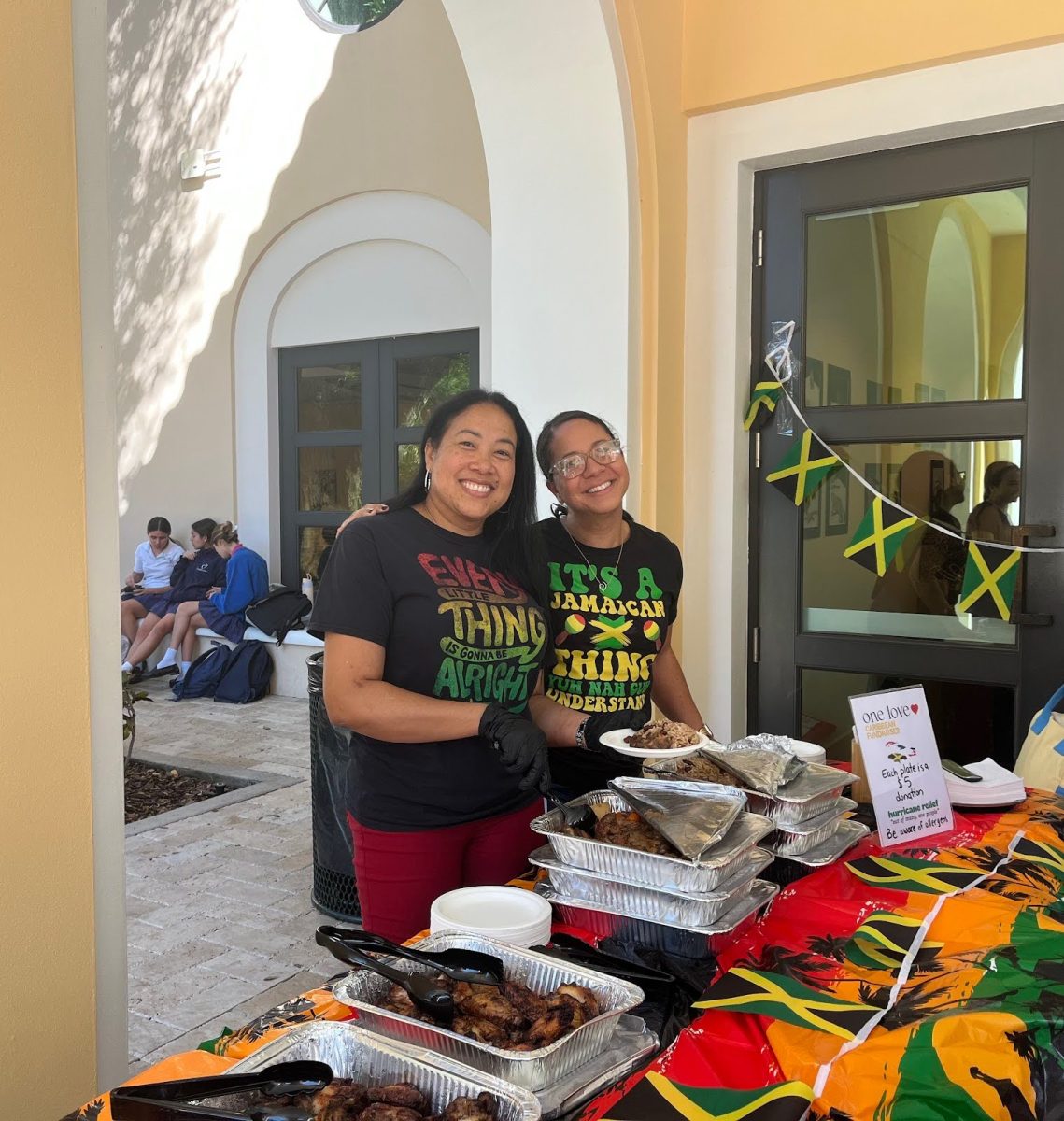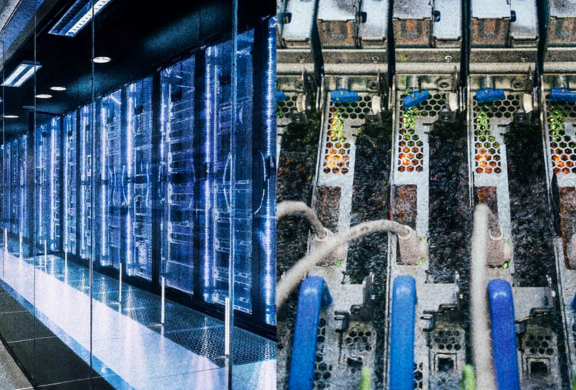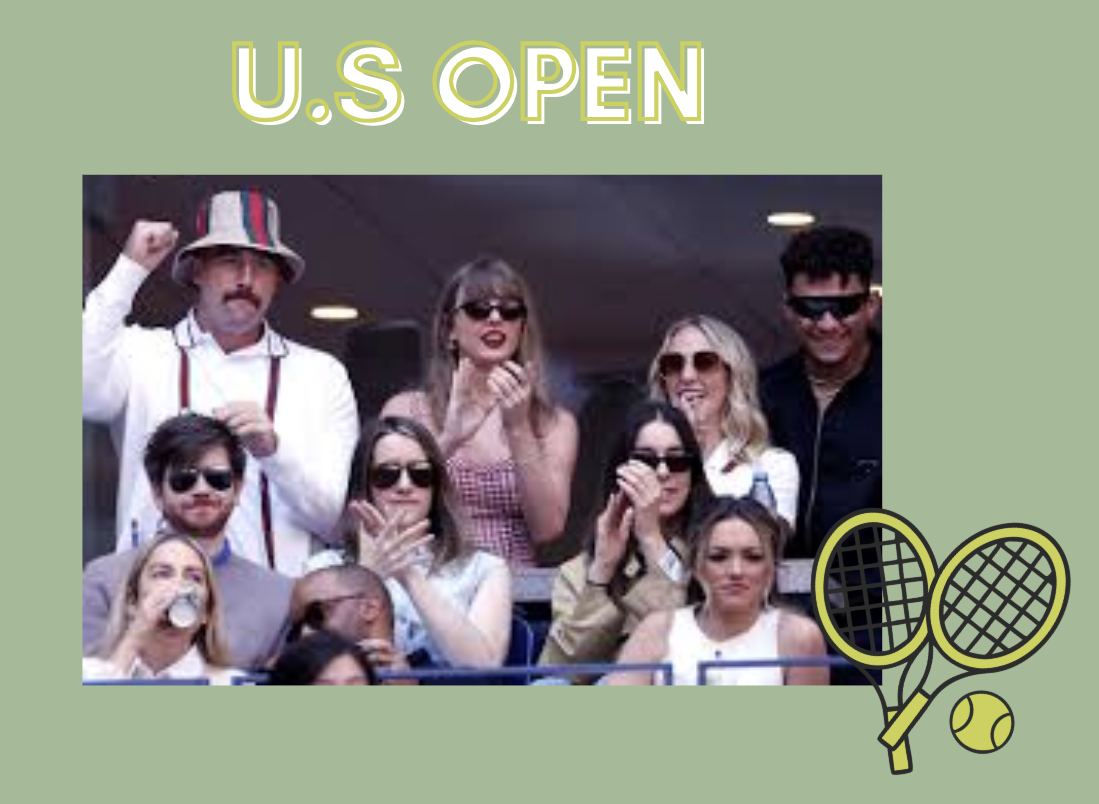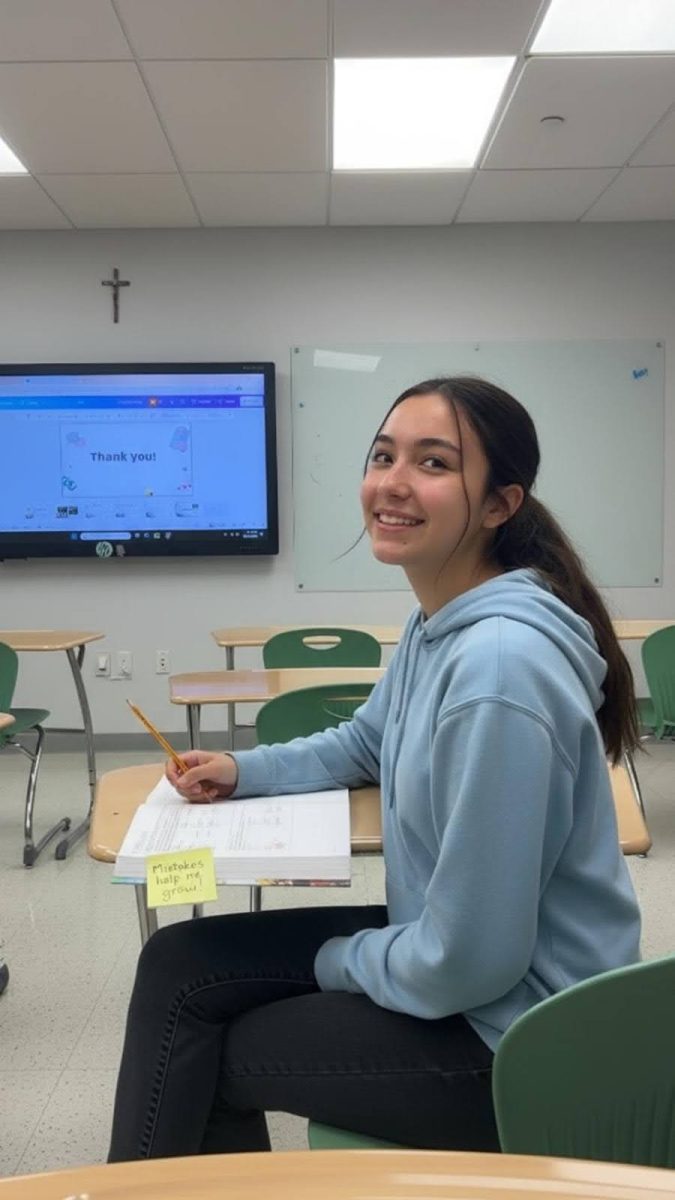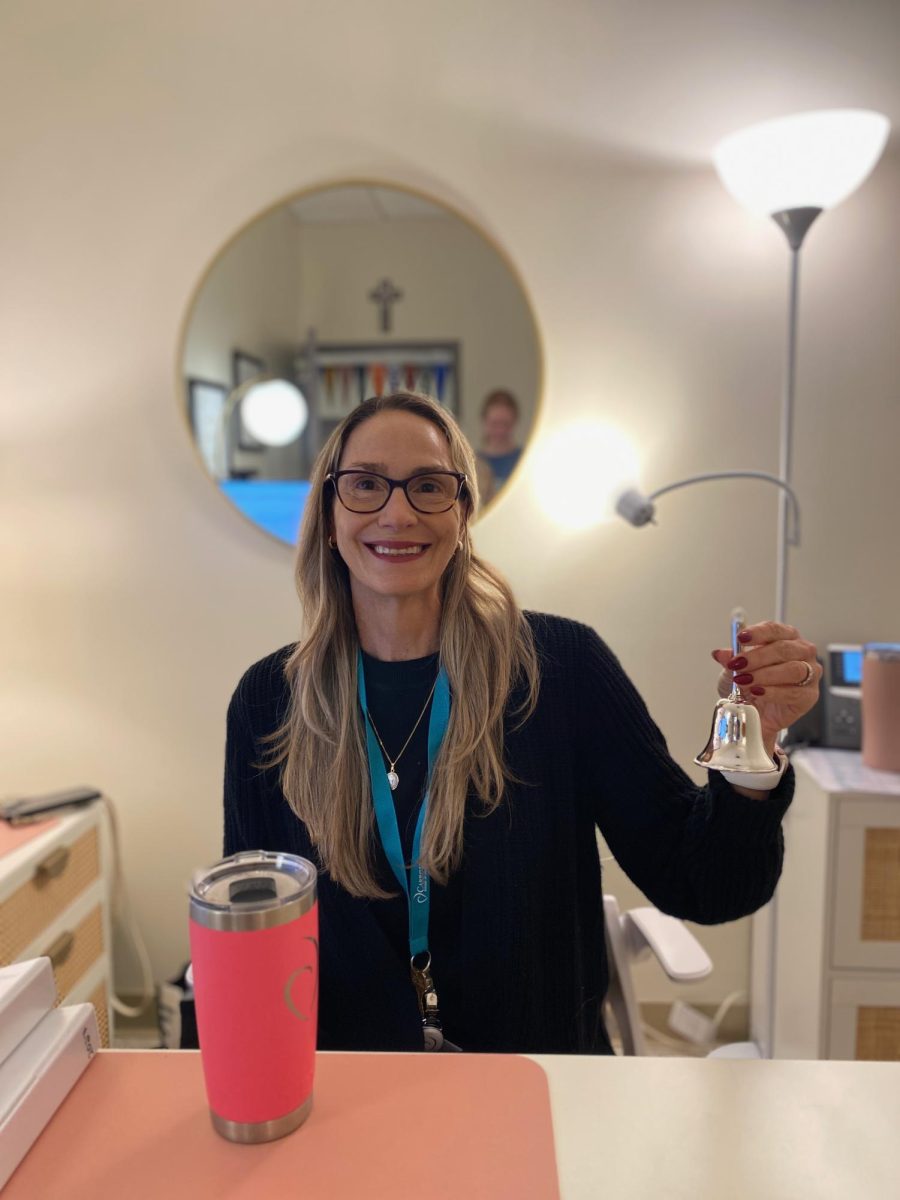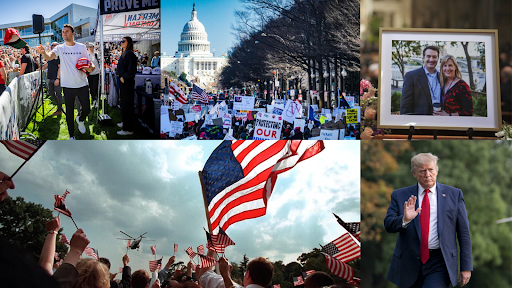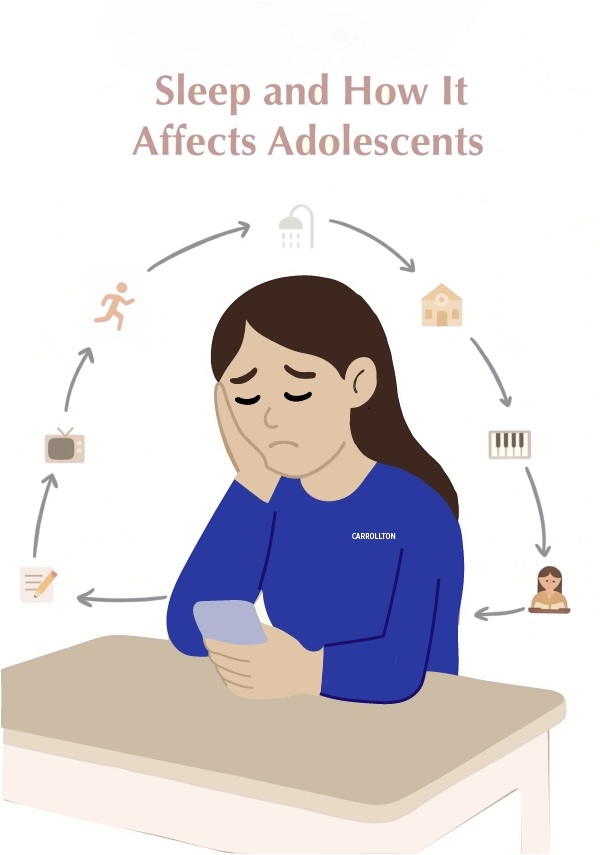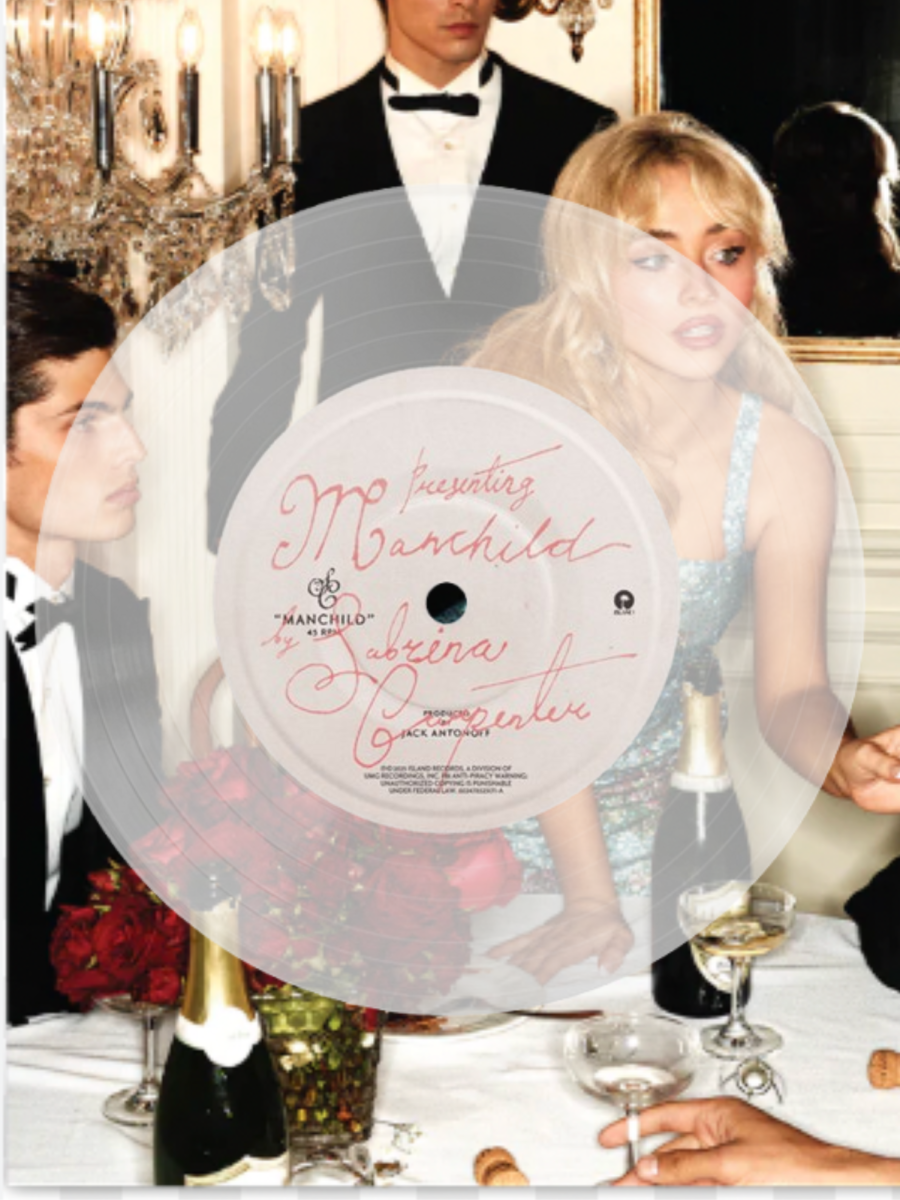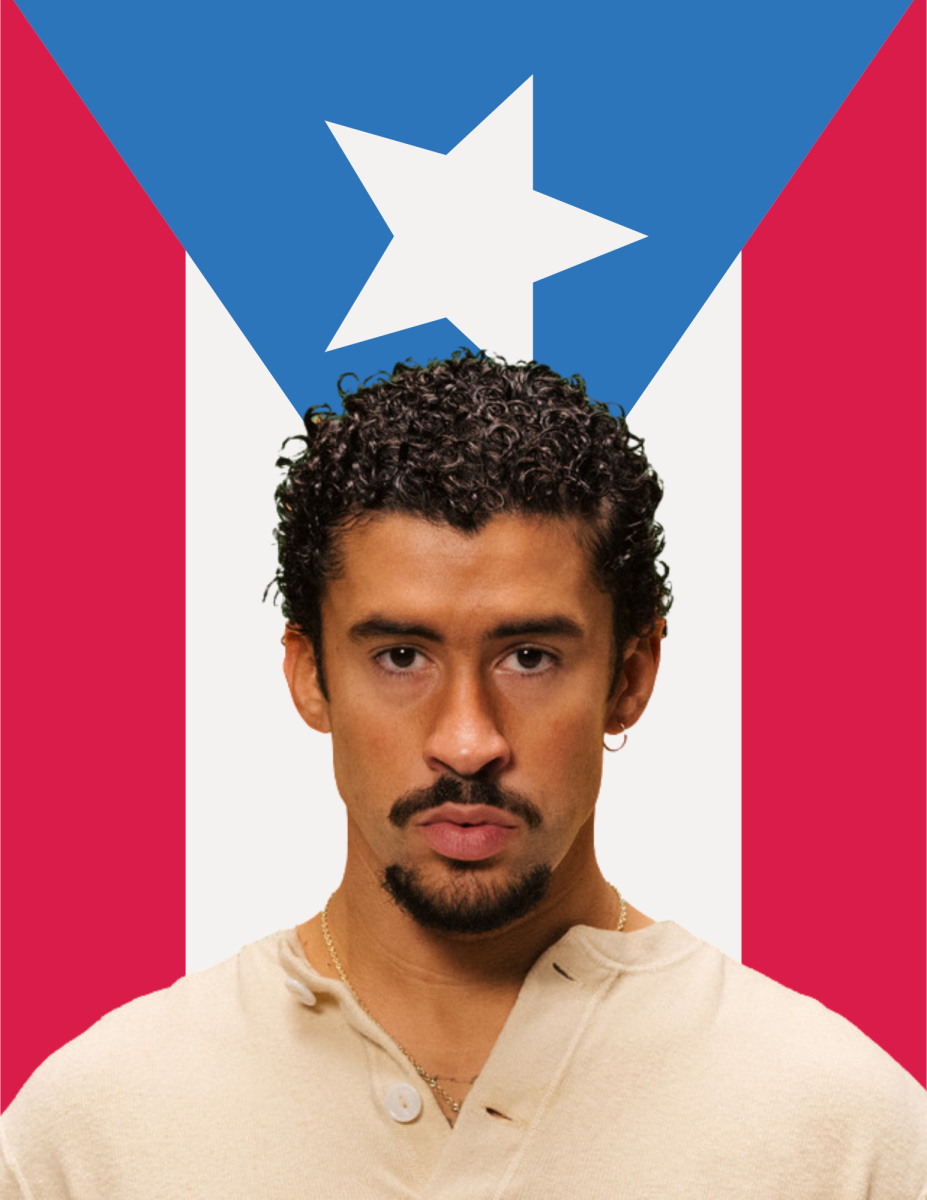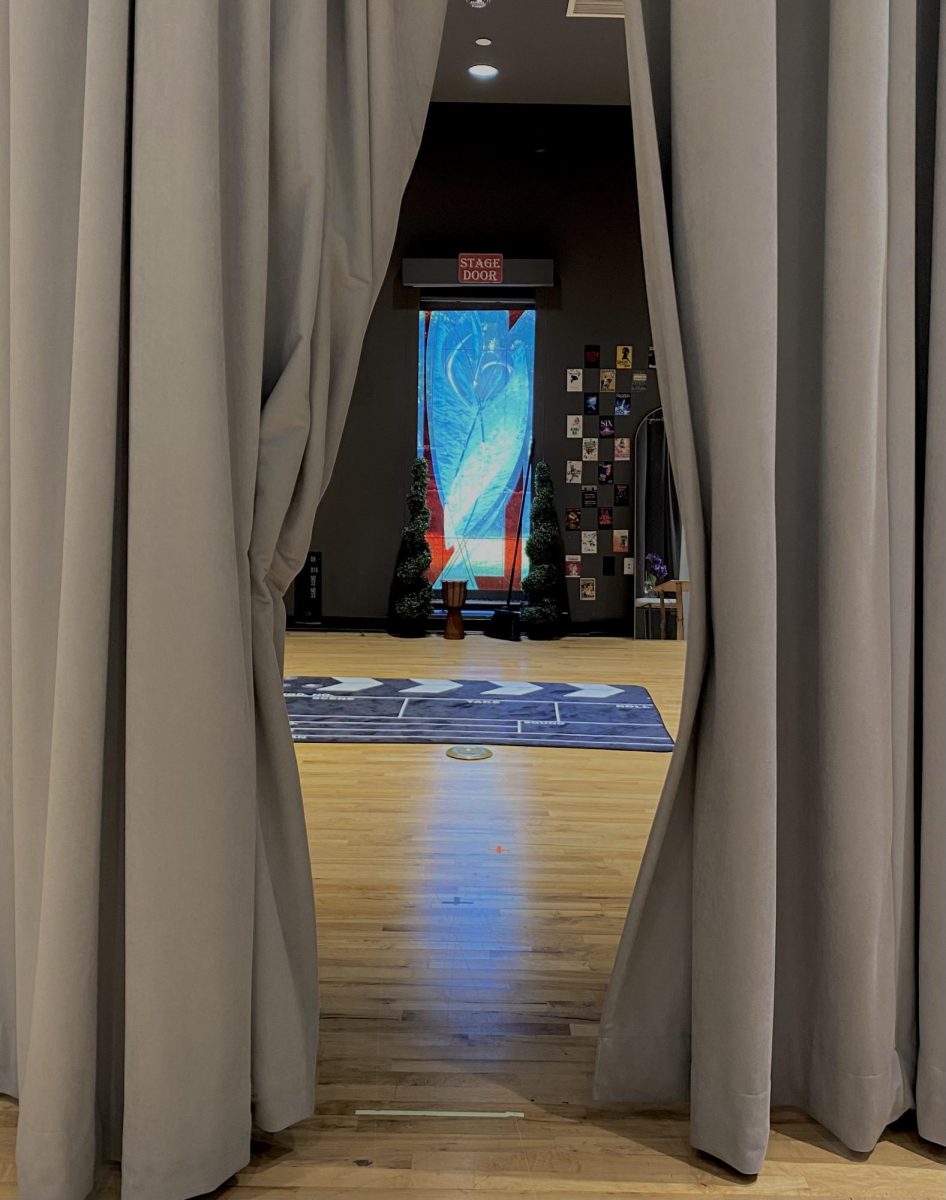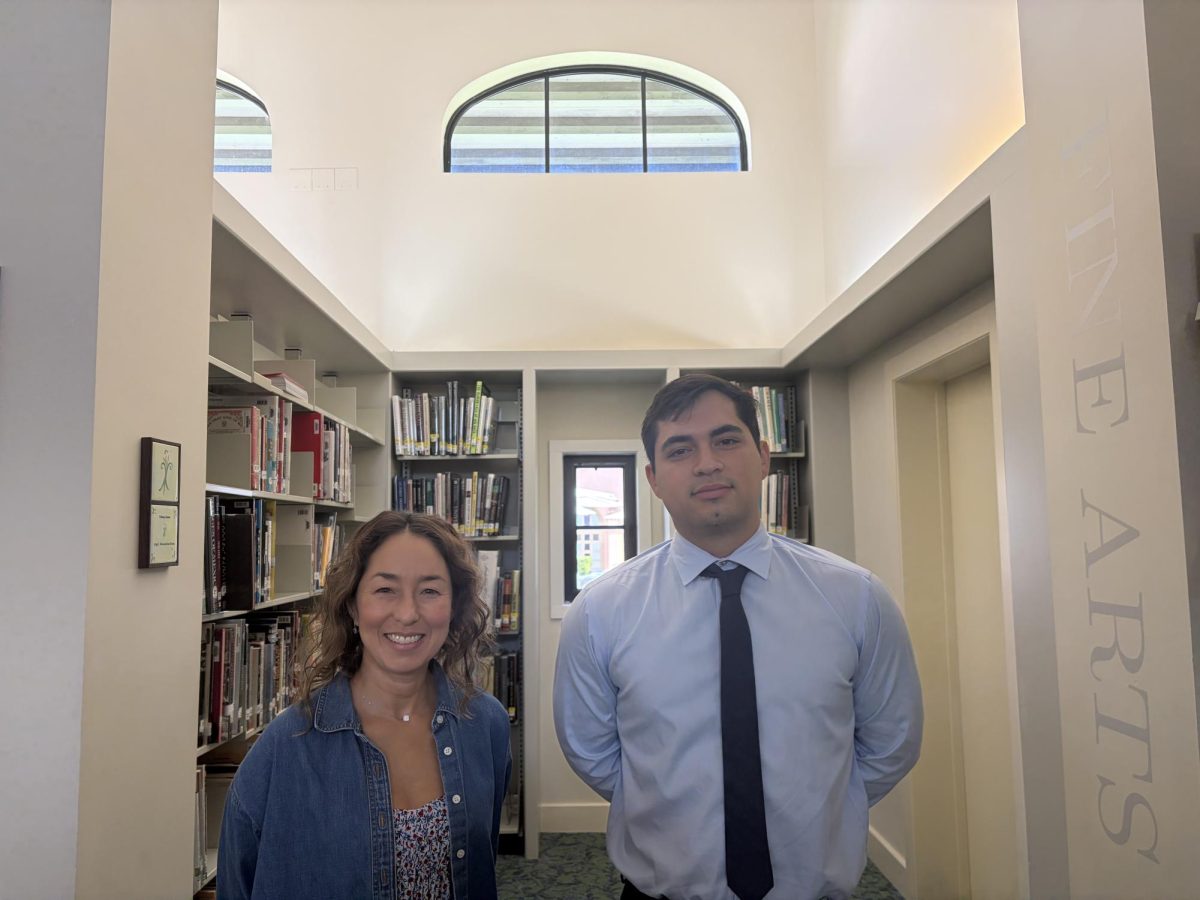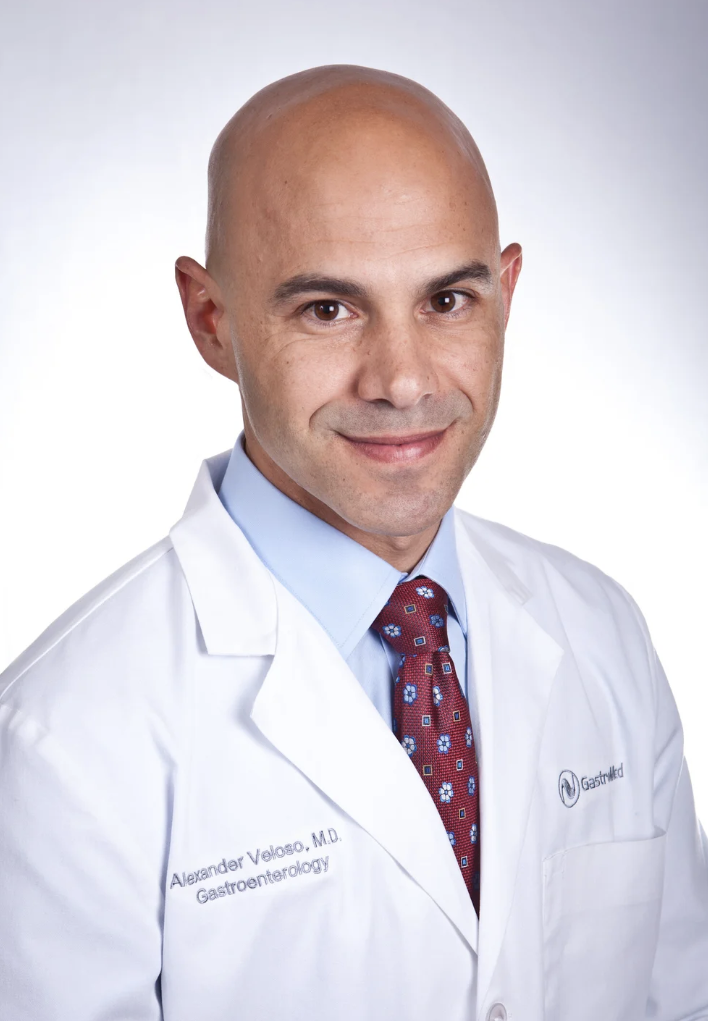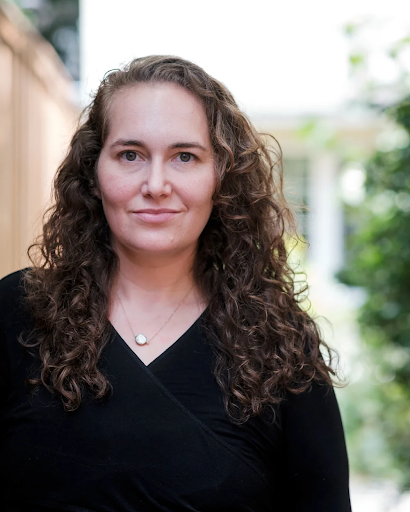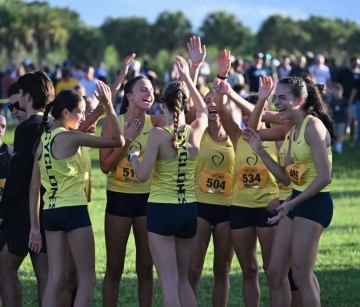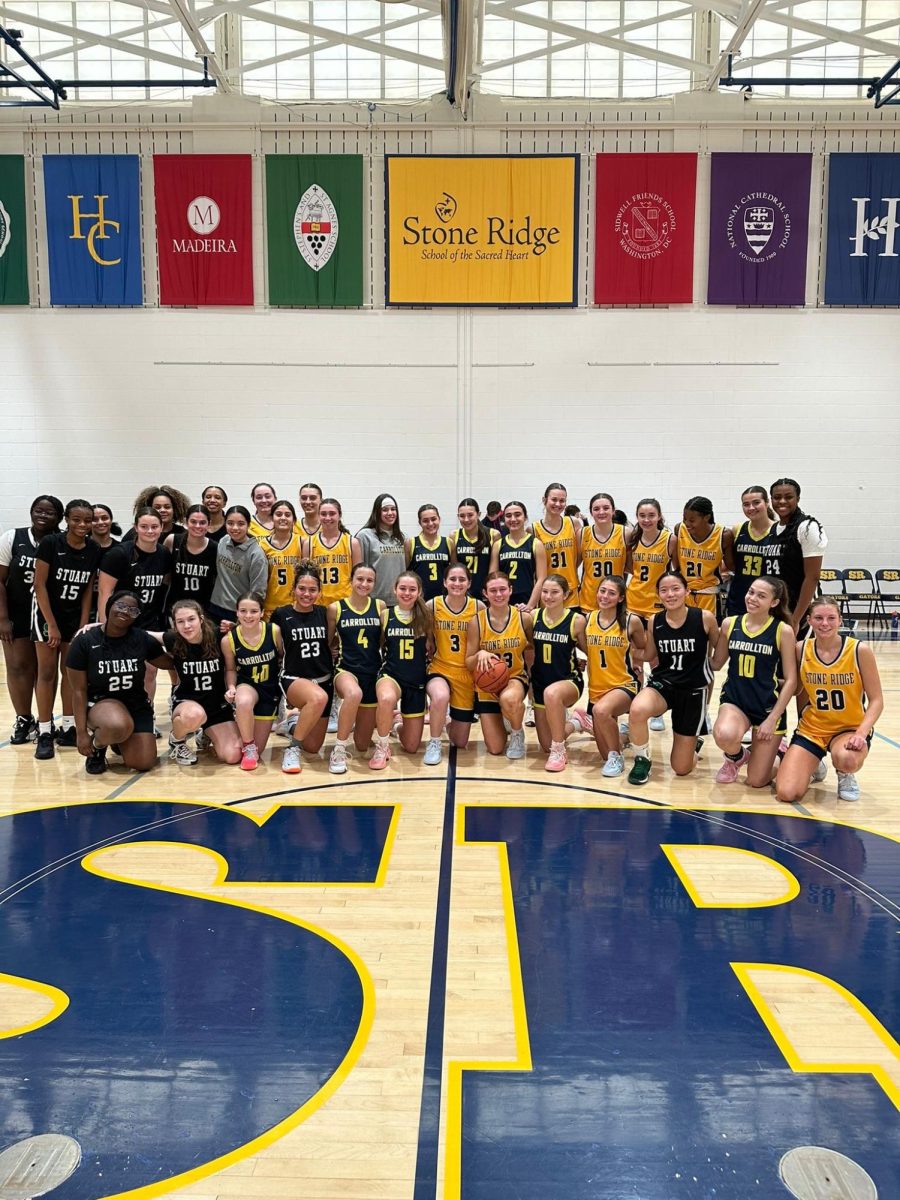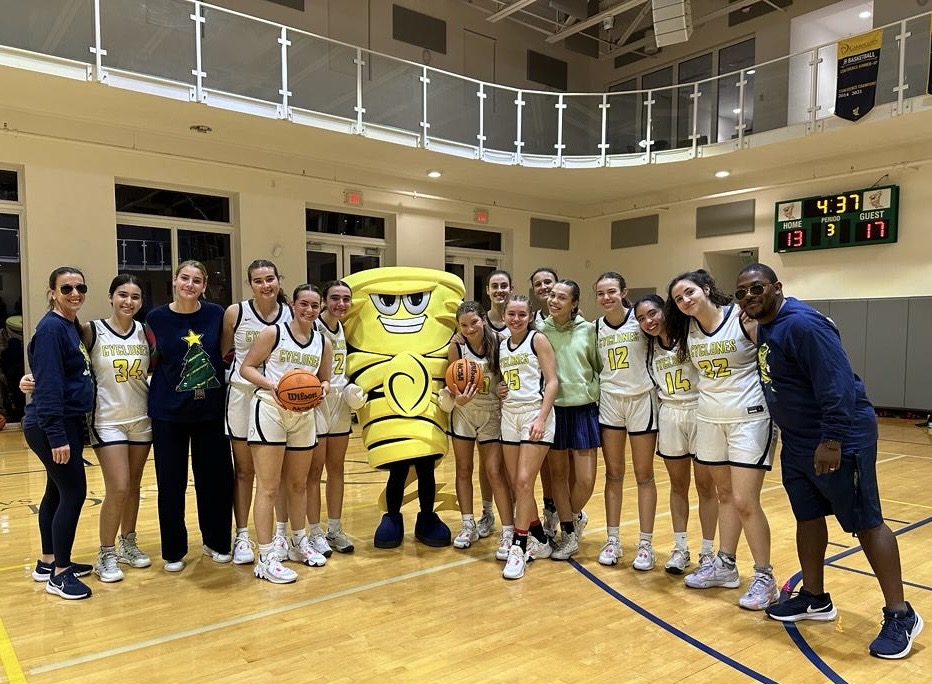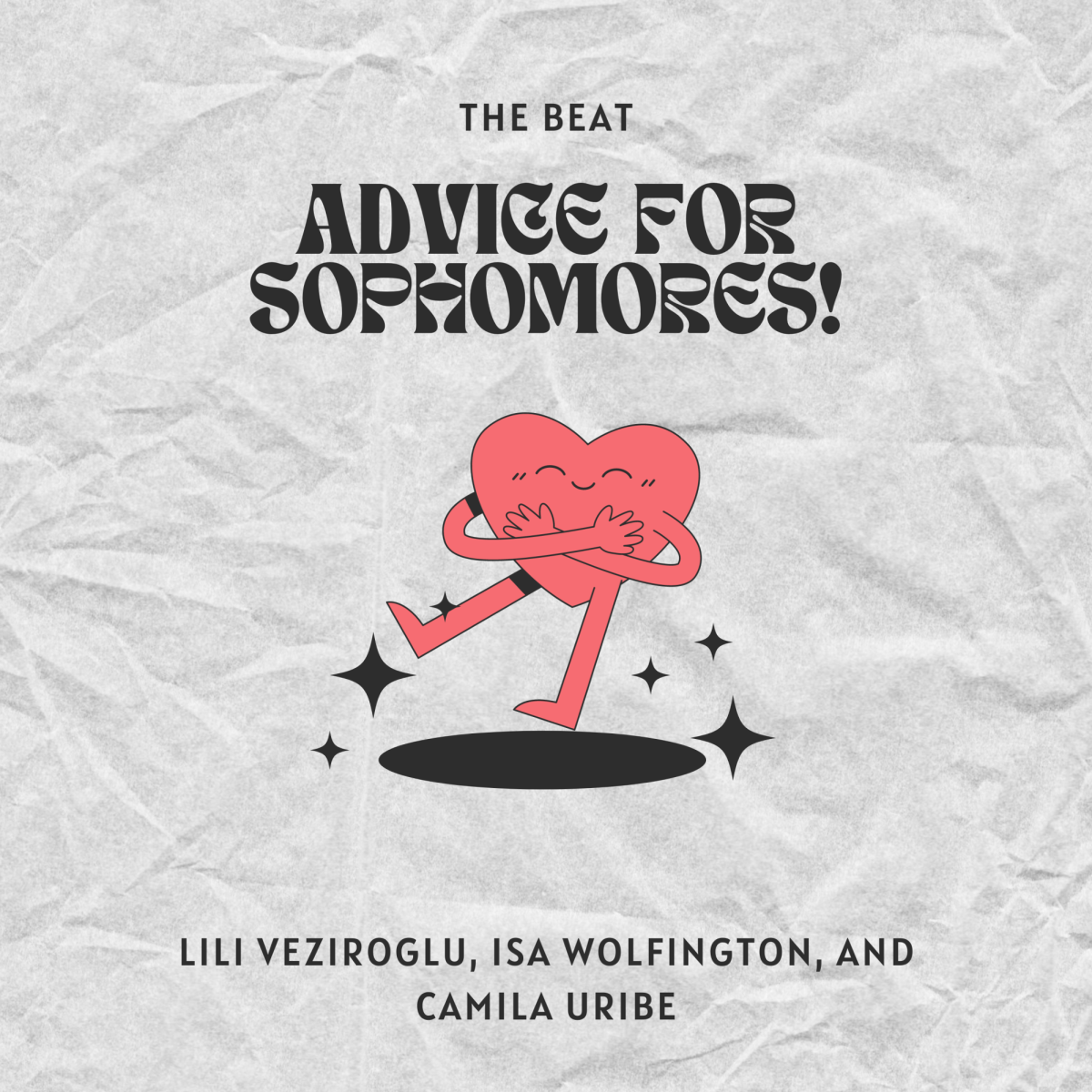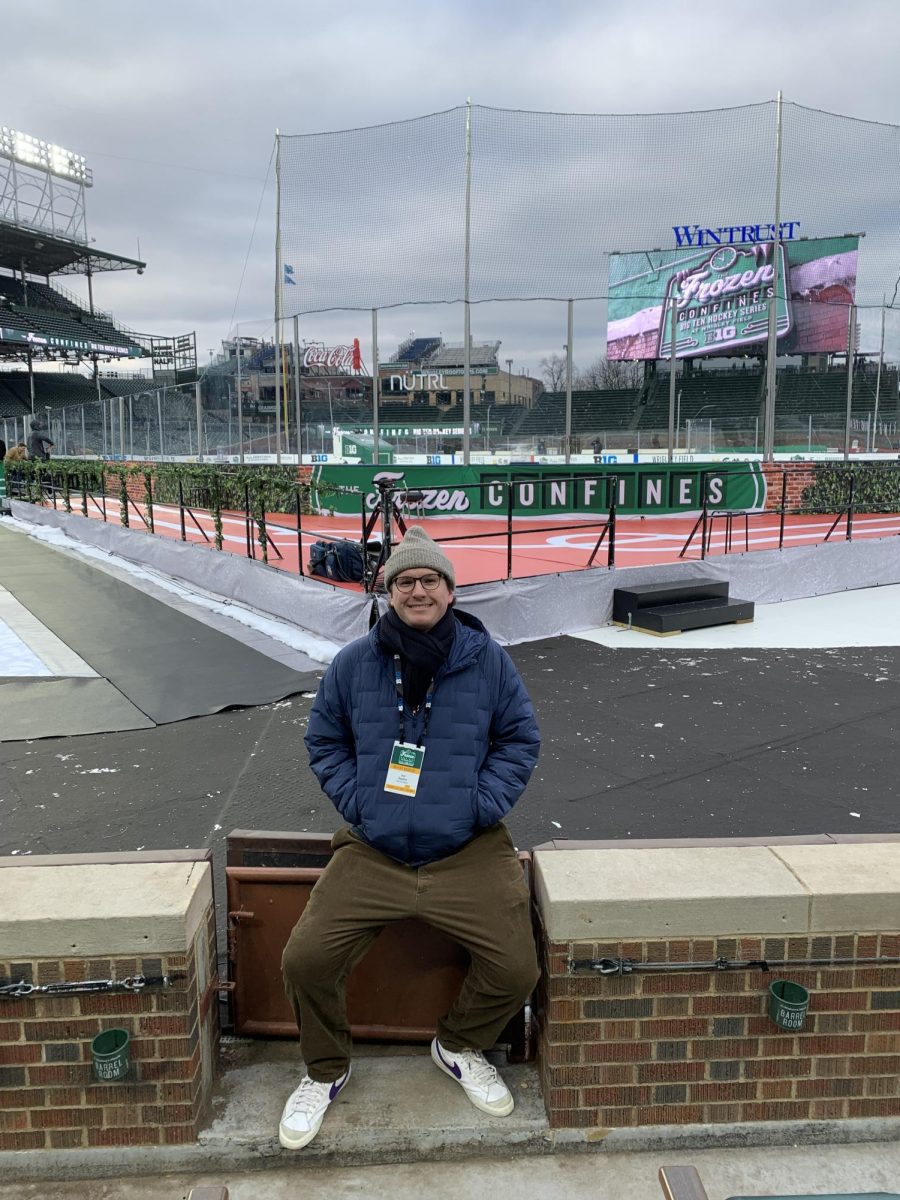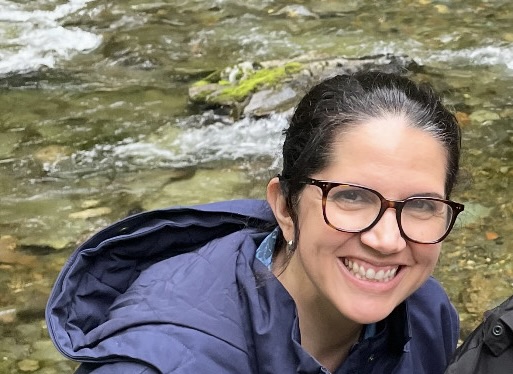
Mrs. Santamaria, the Catholic Social Teaching and Theory on Knowledge teacher at Carrollton, sat in her classroom, back facing her “Thou shalt not commit logical fallacies” poster. On this afternoon, she multitasked by eating lunch and discussing her position here at Carrollton while greeting freshmen as they entered her classroom for snacks.
Now, as a mother and beloved member of the Carrollton community, Mrs. Santamaria helps to enrich the lives of high school students on a daily basis, but this wasn’t always the case. Originally, Mrs. Santamaria worked in a completely different field, touching lives in a very different way.
During our interview, she discussed her previous career, what inspired her switch to teaching, and how her previous career influences her teaching.
This interview has been edited and condensed for clarity.
What work did you do prior to coming to Carrollton?
I was a lawyer for 16 years, and I had my own law practice. Actually, before I went to law school, I worked in business.
What inspired your transition from law to teaching?
While I was working as a lawyer, I felt God calling me to teach religion. I have always loved sharing my faith and since I was 16, I have volunteered as a CCD teacher. I still teach CCD with my husband and together, we have prepared hundreds of children for First Reconciliation and First Holy Communion. I was attending a conference for catechists a few years ago and I felt God call me to do more than just teach as a volunteer, so I prayed about it and decided to go back to school for a Masters in Theology so that I could know my faith on a deeper level and share the passion I had for my faith. I know that God called me to Carrollton. I thought I was applying to be a substitute teacher, but there was a full-time position open, and I knew God was calling me to trust Him and take this opportunity.
What is Catholic Social Teaching?
Catholic Social Teaching (CST) lays out principles that help us to live our faith in the world. These principles help us analyze current issues and take Catholic teachings like scriptures and different teachings of the church and apply them. Right now, in class, we’re studying the dignity of the human person. We’re going to cover things like work, families, and the environment.
What do the principles of CST mean to you?
CST are the beautiful teachings of the Church on how to live out our faith in the world. CST is so important that it is even referenced in the Goals and Criteria of the Sacred Heart, which is a fun fact that I love. Personally, it informs how I make decisions and the ways in which I put my faith into practice. For example, one of my favorite of the seven CST principles is the Dignity of Work and Workers. Work has value and through our work, we contribute and share our gifts and talents with the world. I love teaching students about the negatives of fast fashion, for example, and challenging them to stop purchasing from the companies involved so as to uphold the dignity of textile workers.
How has your legal background influenced your approach to teaching religion?
The idea of justice has influenced me because that is why I went into the legal profession in the first place. I believe in justice. I know that God is a just God. In class, we look at places in real life where justice is not being upheld, and I think that my legal background helps me see that. I also enjoy creating an awareness of these things for students.
How do you balance the analytical mindset of a lawyer with the spiritual focus of religion?
I believe that being faithful is a very reasonable thing. A lot of people think that faith is blind. I look at the world and think that there must be a god because of things I’ve experienced. Of course there are things that we don’t understand in faith, but there are also ways that God has revealed Himself that we can analyze.
What is your teaching philosophy?
I try to point my students back to Jesus.
What strategies do you use to engage students who may be indifferent or resistant to religious studies?
It’s hard, but I find that students here are very respectful. Even if they don’t agree with or believe in a certain topic, they seem to understand and respect that this is what they’re being taught.
How do you approach controversial topics in religion while fostering a respectful and inclusive classroom environment?
I try to tell people ahead of time when we’re going to be covering something controversial. I also try to accommodate students who may have a certain sensibility surrounding a specific topic. So sometimes I’ll let those students pick topics for projects first so they can pick a topic that they’re more comfortable with. I also try to understand when a student can’t sit through a lesson. Sometimes I work with [Upper School counselor] Ms. Montero.
What methods do you use to make CST concepts like human dignity and solidarity resonate with students?
I try to pick topics that the students might be more interested in or involved with. For example, in the family unit, we’re going to compare family leave policies, which I know will affect most of my students at some point.
Can you describe a time when you adapted your teaching methods to help students better understand CST?
This was more in Theory of Knowledge (ToK). In ToK, there are more questions than answers. On one assignment, my juniors said ”but there are no answers,” and I said “Yup, there are no answers, only more questions.” That’s tough for them, but I just try to reassure them.
Where do you see your dual background as a lawyer and religion teacher having the greatest impact on students’ lives?
I think i impact them with my own example of leaving a career for something more focused on my faith. I also want to inspire girls to advocate for topics that they’re passionate about.
What advice do you have for people who may feel a call to divert from the path they’re currently on?
Just pray and listen to God. Trust that God has a plan for us and that he wants us to be happy.


